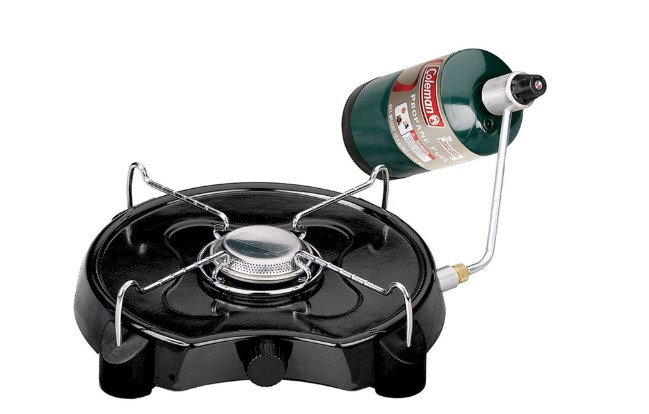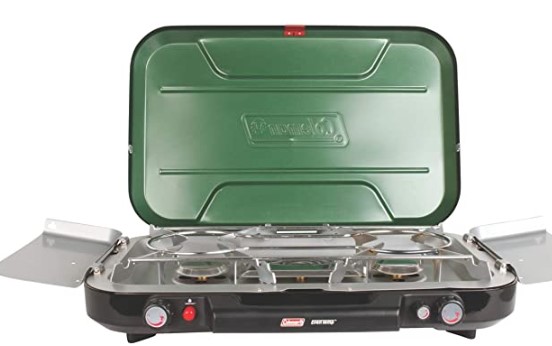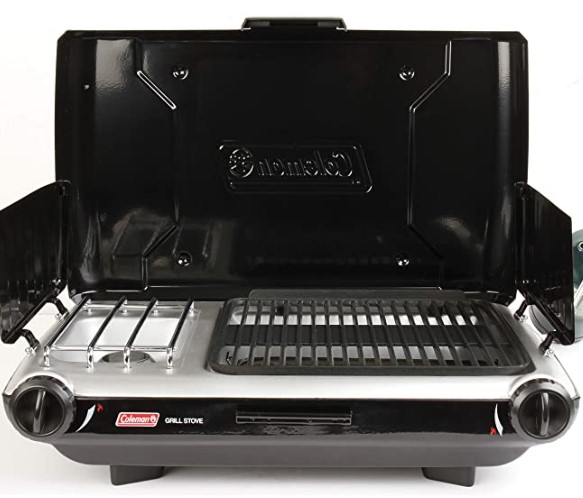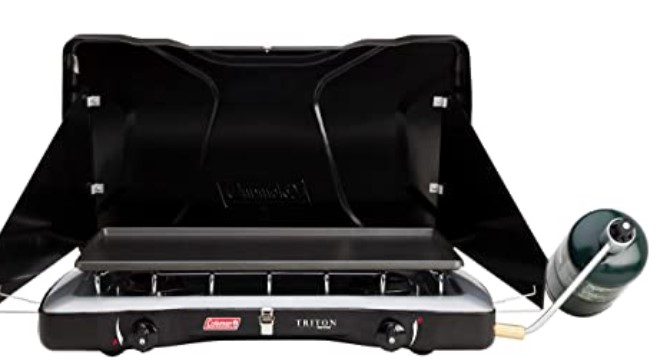5 Best Coleman Stoves For Camping | Full Guide
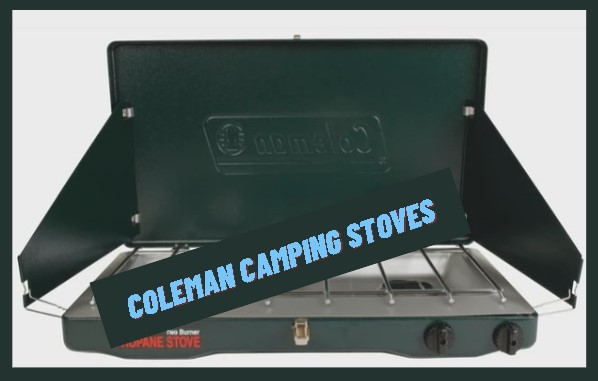
Are you looking to get some camping done this summer but worried that the cooking part will be a burden? We've all been there. Luckily, there are many choices out there for camp stoves that can make your time around the campfire even more enjoyable. Unfortunately,
with so many options out there it can be overwhelming trying to find the right one. That's why we've rounded up a list of our favorite Coleman stoves for camping. Read on to learn more about these great products
and which one is right for you!
Can you use a Coleman stove in a tent?
Are you looking to get some camping done this summer but worried that the cooking part will be a burden? We've all been there. Luckily, there are many choices out there for camp stoves that can make your time around the campfire even more enjoyable. Unfortunately,
with so many options out there it can be overwhelming trying to find the right one. That's why we've rounded up a list of our favorite Coleman stoves for camping. Read on to learn more about these great products
and which one is right for you!
What kind of fuel does a Coleman camp stove use?
The Coleman camp stove uses propane. Propane is a liquefied petroleum gas that's derived from crude oil, which you may have heard of if you read the news or watch YouTube videos about how it's used to make gasoline and other fuels. It's more efficient
than white gas and cheaper to buy in large quantities at places like Costco. Propane stoves are also much easier to operate in an emergency situation because they don't require priming or burning off carbon buildup
before use—you just turn them on and cook.
Butane is another type of liquefied petroleum gas commonly used by Coleman camp stoves, but with certain important differences: butane burns at lower temperatures than propane does, making it safer for indoor use; butane also contains less odor-causing
compounds than propane does (so no more stinky pots!).
5 Coleman Stoves You Should Buy
-
Coleman Powerpack Propane Stove
![Coleman Powerpack Propane Stove]()
If you're looking for a portable stove that's easy to transport, the Coleman Powerpack Propane Stove is your best option. This small and compact propane stove has a built-in propane tank that supplies gas to burn hot and fast. It's great for car camping
because it can be stored inside the car without taking up much space.
-
Coleman Classic Propane Stove
![Coleman Classic Propane Stove]()
The Coleman Classic Propane Stove is a portable stove that is ideal for camping and tailgating. This stove has four burners, which allow you to cook multiple items at once. It also includes a built-in wind guard, so you won't need to worry about your
food getting burned by the wind.
The Coleman Classic Propane Stove works with propane canisters and can boil a quart of water in under five minutes. The pot supports are also designed to prevent wobbling when cooking on an uneven surface like an RV floor or gravel parking lot.
-
Coleman Gas Camping Grill/Stove
![Coleman Gas Camping Grill/Stove]()
The Coleman Gas Camping Grill/Stove is a brilliant combination of grill and stove. The four burners on the grill can be used independently from the two burners on the stove, so you can choose how much cooking power you need at any given time. This makes
this one of the best camping stoves on the market because it allows you to cook large meals while also giving you options for smaller meals and snacks.
If you need a lot of power, use both sets of burners together! If not, use just one or two at a time. When cooking over an open flame or campfire (not recommended), remember to always keep your food well away from any flames so that it doesn't catch fire,
something that happens more often than anyone would like.
One thing noting is that this product requires 20 lb propane tanks instead of smaller ones like 1-pounders or 5-pounders--but that shouldn't be too much trouble if you plan ahead!
-
Coleman Triton Series 2 Burner Stove
![6 gauge wire]()
Coleman's Triton Series 2 Burner Stove is another exceptional option for campers. It has two burners, each rated at 5,000 BTUs. With the included windscreen and grill, this stove can be used to cook food in all kinds of weather—even if you're camping
on the beach.
The product measures 16.93 x 9.45 x 2.76 inches. The lightweight aluminum construction makes it easy to transport or store in your backpack while traveling with camping gear. When set up properly, this stove will provide plenty of heat for any group size
or meal type (including deep frying). The fuel tank holds 4 oz of propane gas at a time, making it great for short trips where you won't need as much fuel stored at once; however, you can also purchase an adapter
so that more than one tank can fit into this stove's holder at once.
-
Coleman Butane Instastart Tabletop Stove
With up to 1.25 hours of burn time on one 8.8 oz. butane cylinder (sold separately), the Coleman Tabletop Gas Camping Stove, 1-Burner is ideal for camping trips and tailgate parties. Its adjustable burner delivers up to 7,650 total BTUs of cooking power
and fits a 10-inch pan which is perfect for cooking all your favorite foods! The Instastart™ push-button ignition lets you cook without matches and means you’ll never be left without fire when you need it most.
Made from heavy-duty enameled steel for long-lasting durability and corrosion resistance, this stove features a wind baffle around the burner to protect against unpredictable weather conditions and maximize
heat output even in low winds.
Butane
Butane is a liquid fuel. It's easier to store and more convenient than propane, which must be stored in pressurized canisters that are about the size of a soda bottle. Butane also has some other advantages over propane: it’s safer, more environmentally
friendly and more efficient
Butane canisters are smaller than propane tanks, so they're easier to carry around with you when you're camping or hiking. They don't require an adapter or hose attachment (like many propane tanks do), so they fit easily into your backpack without taking
up much space at all. And since butane is cheaper than propane, it makes sense that Americans first started using this type of grill in their backyards during the Great Depression - when money was tight and everyone
wanted something affordable that would still give them good meals without breaking their budget!
The right stove can make or break a camping trip
The right stove can make or break your camping trip. The wrong one can leave you longing for the comforts of home, with no warm meal or hot coffee in sight. If you're buying a new stove for your next trip, it's important to know what to look for so that
you get exactly what you need and nothing more.
Before purchasing a new stove, first consider what kind of fuel it uses: liquid petroleum gases (LP gas), white gas/Coleman fuel (a mixture of naphtha and alcohol), butane/propane (smaller tanks) or kerosene? Each type has its own pros and cons: LP is
odorless but not very efficient; white gas/Coleman fuel is cheap but contains petroleum distillates; butane/propane are easy-to-use but less powerful than the others; kerosene gives off a strong smell when burned
but is inexpensive enough even on long trips where weight matters less than cost savings.
You'll also want something that's easy to use, and maintain, in all types of weather conditions without getting clogged up with dirt and mud along the way.
What burns hotter propane or white gas?
Propane burns hotter than white gas, which burns hotter than gasoline, kerosene and diesel. White gas is a petroleum distillate that can be used for camping stoves as well as other applications such as cleaning firearms and woodstoves. It's also known
by the name Coleman fuel or camping stove fuel. It's obtained from processing crude oil or natural gas into lighter hydrocarbons like propane, butane and pentane through a distillation process called fractional
distillation.
Propane is a liquefied petroleum gas (LPG) made from crude oil refining processes such as catalytic cracking or heavy vacuum distillation of crude oil fractions left over after atmospheric distillation. Propane has many uses; it's most commonly used for
heating homes during wintertime because it produces less carbon dioxide when burned than heavier hydrocarbon fuels like natural gas or coal do, making it more environmentally friendly to use this type of fuel indoors
where you're not burning something outdoors like gasoline-powered lawnmowers.
Subscribe
Stay updated with our newsletter
Conclusion
Choosing the best stove for your camping trip can be tricky. We hope this article has helped you make a decision about what kind of stove to get, as well as given you some insight into the different types of stoves out there. The next time you go camping,
don't forget to bring along your favorite coleman camping stove.

